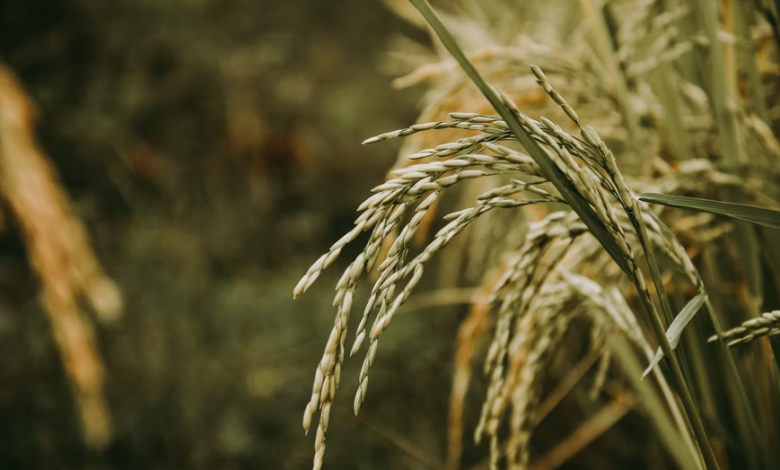
Rice farming is a profitable business that has its own challenges. It’s important to equip yourself with the right strategies to get the maximum yield from your rice crop. Keep reading this blog to find twelve actionable tips on how you can make rice farming financially feasible for you!
1. Choose farming land carefully
The farming land you choose for your rice crop will dictate its yield. Although you can grow rice on all types of land, it’s better to find the most suitable land to get better results from your farming efforts.
Experts recommend that rice crops grow better in swampy lands. If you can’t access swampy land for your rice crop, it’s better to find a place where you can irrigate your crop easily. Having access to water will also cut down your irrigation costs.
Choose fertile land with good ecological properties and higher water retention capacity for the proper growth of rice plants.
2. Connect with other farmers
Finding all the information about growing your rice crop can get hectic. It’s better to link up with other rice farmers so you don’t spend all your time gathering information and cannot implement the information on your rice crop.
Join online groups where you can find tips about rice farming. It’s better to link up with local rice farmers to get actionable advice on how you can get maximum yield from your crop.
3. Prepare the soil
Improper soil can slow down the growth of your crop. No matter how much knowledge you have about growing rice crops, if the soil is infertile, you won’t be able to achieve your crop yield goals.
Make sure you learn how you can prepare the soil. Check the pH and the level of nutrients in the soil to check if it’s perfect for your rice crop. You should also identify the fertilizers that can add nutritional value to your farming soil.
Preparing the soil also requires you to use some tools. Make yourself familiar with those tools and learn how to use them properly for soil preparation.
4. Prepare the land
Some problems in your farmland might halt the growth of your rice crop. To get maximum crop yield, it’s important to identify those problems and fix them at the right time. Preparing the farmland isn’t difficult if you know the right practices.
Here is how you can prepare your farming land for your rice crop:
- Weed the farm properly.
- Level the farmland.
- Till the land properly.
- Mix the farming soil.
5. Pick the right fertilizers
Pests, weeds, and other soil problems can lower the levels of nutrients in your farmland. It’s important to keep the nutrients balanced to ensure that rice plants can grow properly. If you identify that your farming soil has lower levels of nutrients, you can fix the level of nutrients by adding fertilizers.
Choosing the right fertilizers depends on several factors. Adding improper fertilizers to your rice crop can even damage the plants. Therefore, it’s better to contact your local crop expert and ask what fertilizers you should use.
6. Plant at the right time
The time when you sow the rice seeds dictates the growth of your crop. Sowing at the right time ensures that rice plants grow properly and provide maximum yield.
Identify what time of the year is the best for sowing rice seeds in your area. You can read the reports published by trusted organizations about rice plantation time or link up with local farmers to learn when to sow the rice seeds.
7. Manage your farm the right way
Farm management can go ignored if you are focused on choosing the best seeds and rice planting strategies. With a proper farm management strategy, you won’t be able to take care of your rice crop.
Start building a team for farm management. Make sure you divide responsibilities among skilled people who can take care of their jobs the right way. You can also learn from local farmers how they manage their farms to get the maximum rice germination yield of their rice crop.
8. Take care of pests and weeds
Pests and weeds can multiply in no time if left unchecked. Several types of pests and weeds attack rice crops. The problem with weeds is that they steal the nutrients that rice plants require for proper growth.
Pests can also feed on rice plants and damage them. It’s your job to keep weeds and pests outside your farming land.
Learn how you can safeguard your plants against pests. Weed your farm regularly, so no unwanted plants grow in your rice fields.
9. Scout the fields regularly
As mentioned above, it’s important to get rid of pests and weeds, but how can you do it the right way? Scouting your rice field can help you ensure that your rice crop isn’t facing any problems.
Scouting is a process that requires a team effort. You need skilled crop experts who can check every acre of the farming land to identify if there are any problems.
Scouting the fields can get difficult if you don’t have many team members. You can rely on drone monitoring of your crop to speed up the scouting process for you.
10. Harvest your crop
The Rice crop doesn’t take long to mature if grown properly. The harvesting process involves reaping the mature crop and preparing it to sell.
Harvesting the rice crop can get a bit tricky. However, if you’re equipped with the right strategies, it will become easier to harvest your crop.
The two main methodologies for rice harvesting are:
- Manual harvesting
- Mechanical harvesting
It’s better to rely on manual harvesting if you have small farmland. However, you can adopt mechanical harvesting if you have big farmland.
11. Dry your crop properly
Your rice crop isn’t ready to sell after harvesting. You have to dry the rice grains before contacting a buyer for your crop. Drying the crop allows that extra moisture doesn’t damage the rice grain, and they’re good to eat. More Info About Exipure
The best way to dry your rice crop is by exposing the grains to sunlight. Pests can damage the harvested rice grain. It’s therefore essential to monitor the crop in the drying process.
12. Milling and storing your crop
After drying the crop, the next step is called the “milling” process, which involves removing the husk and bran from rice crops. You can easily complete the milling process if you use automatic milling machines.
After milling, your crop is ready to sell. You can store your crop until the buyer takes the crop from your storage unit. Ensure that the rice crop is stored safely and pests can’t reach it.
Read Also: Types of Earrings




